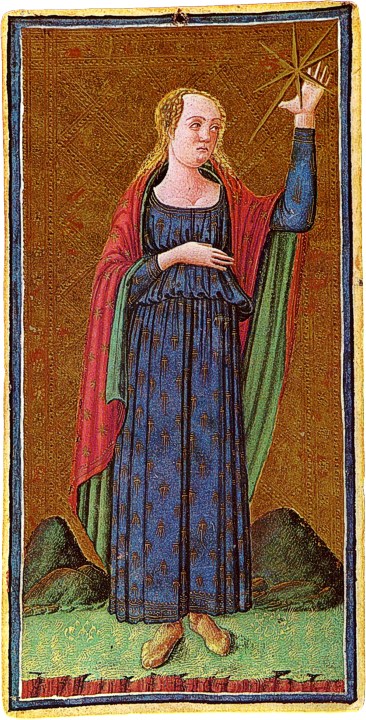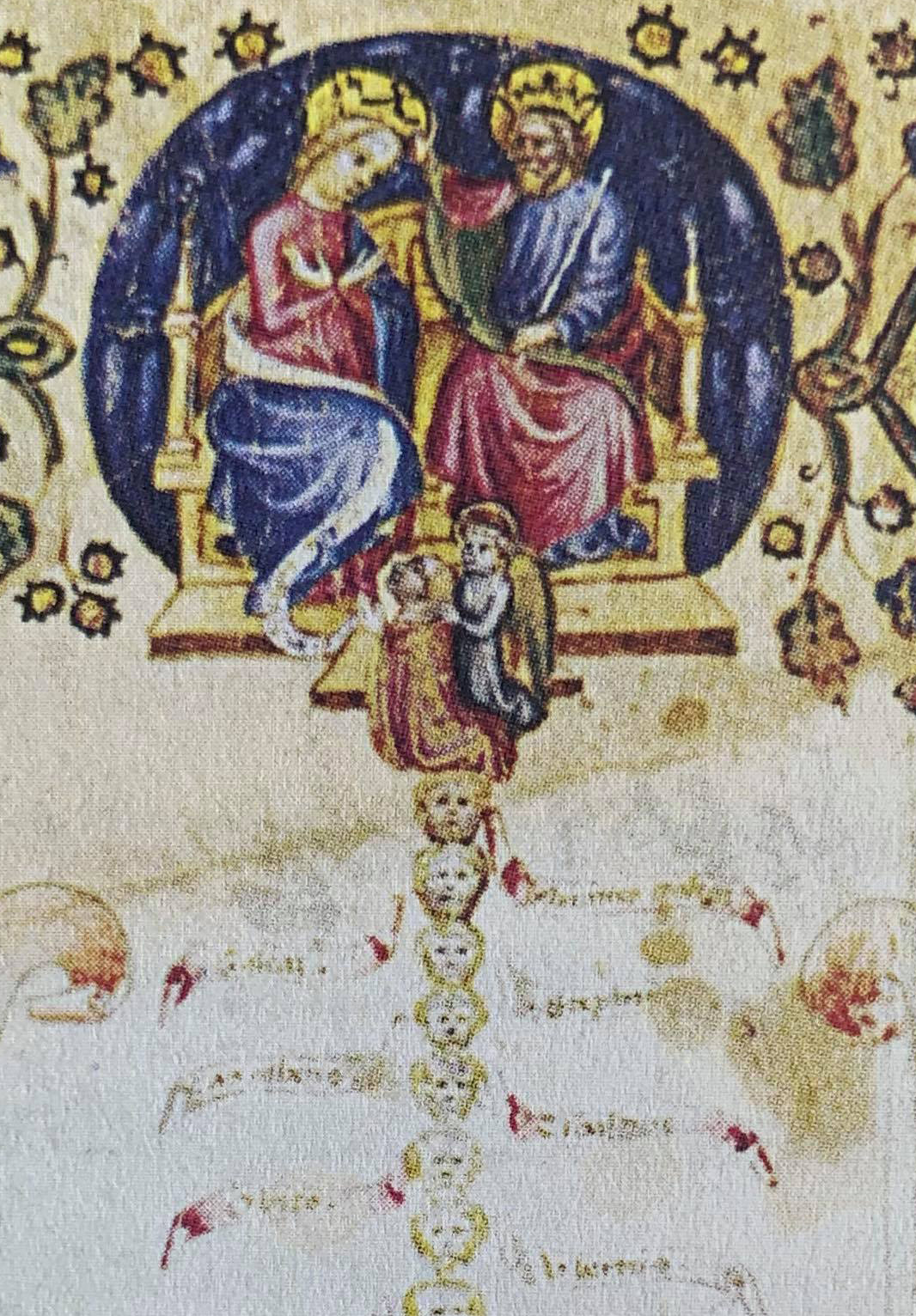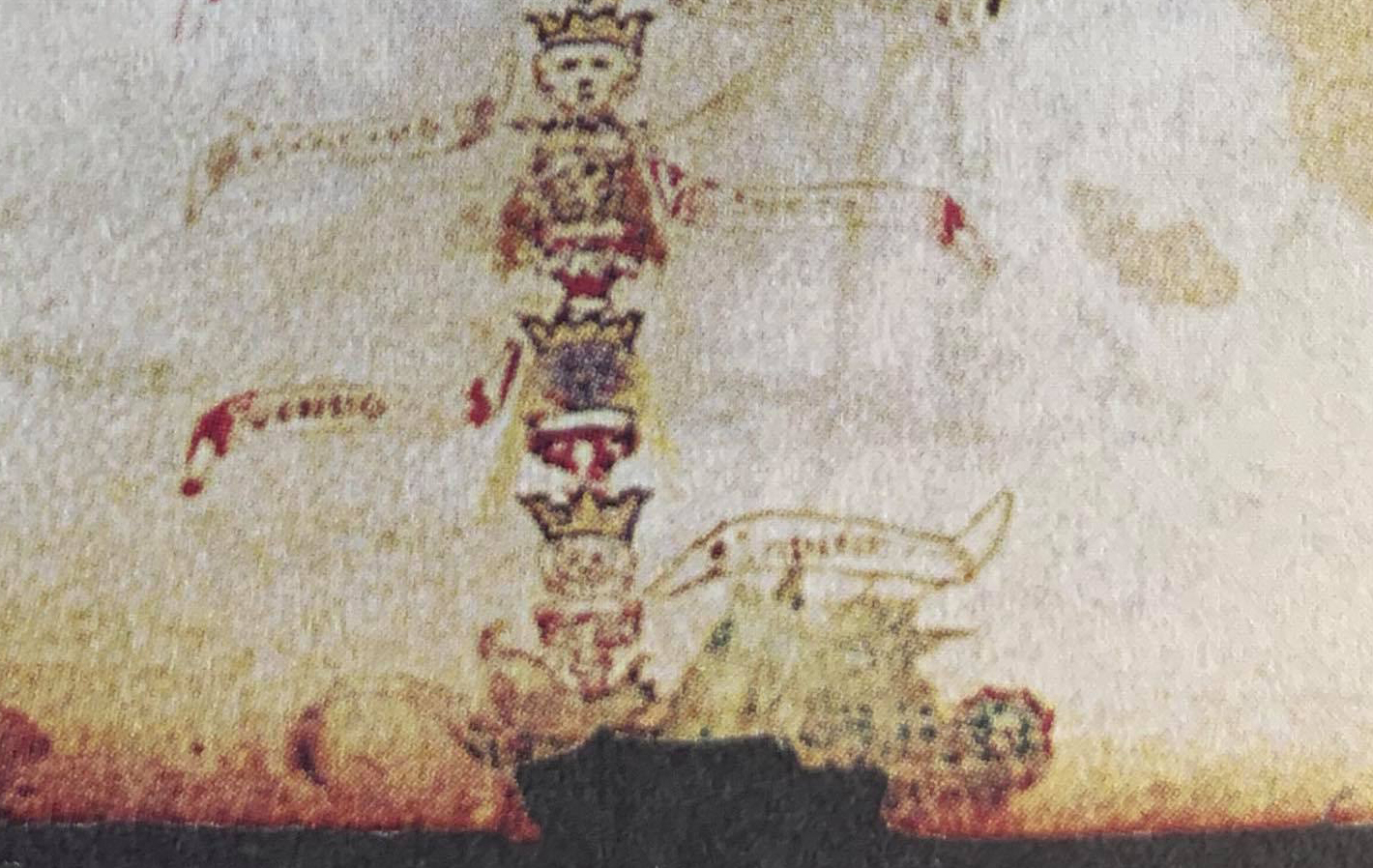Ross Caldwell wrote: 09 Jul 2023, 18:33
I'm really intrigued by Filelfo's brief allusion to Filippo Maria's annual offering of the trunk to Vulcan on 31 December/1 January (the day starting in the evening, so the night of 31 December is 1 January). Letter number XXVI here -
viewtopic.php?p=26011#p26011
It turns out that the classical Vulcanalia was on 23 August, so nowhere near 31 December. Anybody have any ideas what could be going on here? Another tradition?
+
It occurs to me that Filelfo could merely be classicizing the annual burning (Vulcan) of the Yule log (trunk), if that tradition were known then.
In the Ode, Vulcan's father is noted as the Nile, which puts us in the realm of the Phoenix, which probably leads nowhere, but calls to mind the significance of that bird. Given the duke's fears of eclipse and identification with the sun due to the solar stemma, the time of the winter solstice would be a time to rekindle the sun. The reborn sun = phoenix, which again is of course in Marziano. Probably need to look again at that odd 1430 ritual chariot he had made.
Cengarle, Federica, Covini, Maria Nadia (eds.), Ducato di Filippo Maria Visconti, 1412-1447. Economia, politica, cultura, 2015, "Il Sole ducale (1430): a proposito di una divisa viscontea", by Federica Cengarle. A bad machine translation from a line in the beginning, but to give you a taste:
In July 1430 Filippo Maria Visconti commissioned his courtiers to give an oration to celebrate the effigy of the sun of his quadriga [four horse chariot], an image that takes up the classic representation of the Sol Invictus, already used by the emperors, as well as its Christian repositioning, and which he now wants to use for his sign.
The phoenix definitely shows up as a kind of Sforza stemma, strongly with Bona of Savoy, but it preceded her use of it with Ippolita Sforza who was married off in Naples. She places a 'del parto' gesture hand on her stomach like the PMB Venus/"Star" (perhaps in consideration of future children) with the phoenix at her feet:
This manuscript of 1465, belonged to the Duchess of Calabria, Ippolita Maria Sforza. After his wedding with Alfonso de Aragón, Duke of Calabria, fourteen manuscripts were taken to Naples as part of his dowry. Of these codices, two are preserved in the University of Valencia, Ms. 49 and this Ms. 891 that contains the works of Virgil. This codex is one of the most beautiful manuscripts of the miniaturist known as the Master of Ippolita Sforza.
Bona's Hours (1490)
As well as a coin: N. GIAN GALEAZZO MARIA SFORZA - REGENCY OF BONA DI SAVOIA, 1476-1480. Testone (or Grosso da 20 Soldi). (face of St. Ambrose) BONA 7 IO GZ M DVCES MELI VI Veiled bust r. of Duchess Bona of Savoy. R/ (face of St. Ambrose) SOLA FACTAS SOLVM DEVM SEQVOR The phoenix with spread wings at the stake.
https://drouot.com/en/l/21488332-ji-an- ... i-sa-wo-ya
Way back in 2009 mikeh posted this excellent info in the 5x14 thread, which would lead one to believe that the turtledove is radiate because it emerges phoenix-like from the flames:
Music in the Castle: Troubadours, books, and orators in Italian courts of the Thirteenth, Fourteenth, and Fifteenth Centuries, by F. Alberto Gallo, Anna Herlotz, and Kathryn Krug, pp. 57-58. The authors describe a series of sonnets by Francesco di Vannozza, poet-musician at Giangaleazzo's court from 1389:
...it opens with a "canzon morale fatta per la divisa del conte di virtue (moral canzone written for the heraldic device of the count of Virtue). This introductory canzone describes the emblem and motto created by Petrarch for Giangaleazzo on the occasion of his marriage to Isabelle of France: a white turtledove within a sun emanating golden rays, and the French motto "A bon droyt" (with good reason: by right)...
The authors then talk about the miniatures that accompanied the verses, combining emblem, motto, and music. They continue:
"These same three elements are even more tightly and functionally grouped in a contemporary musical composition with the following descriptive French text:
Le ray au solely qui dret son karmene
En soy bracant la douce tortorelle
...
A bon droyt semble que en toy perfect regne.
The sun ray which leads a correct melody,
The sweet turtle dove rocking herself,
...
It seems that a bon droyt, perfection reigns in you.
These are lines from a famous canon by Johannes Ciconia; the song itself, "Le Ray au Soleyl," is enjoying a renaissance of its own these days and is available in both traditional and (I think) Latin dance arrangements (the latter on a CD entitled "Alarm will sound"). The point is that the song alludes to the elements of Petrarch's emblem. See also an article entitled "Virtue and the Viper: Emblems and Imagery at the Court of the Visconti," for the San Francisco Bay Area Early Music News for April 2007, by Carolann Buff, on p. 9, available on-line, which makes the point explicitly.
The latter article also talks about the turtledove as a heraldic device. Jacopo da Balogna, at the court of Bernabo Visconti, has a song with the words, "I was a phoenix of life tender and pure, now/ Transformed into turtledove." Buff explains that these words describes Bernabo's wife Beatrice della Scala, from Verona: "During her years as a young woman in her father's court, her emblem was the phoenix, but upon her marriage to Bernabo she adopted the Visconti turtledove" (p. 9).
Another song by Jacopo is "Aquilla altera-Creatura gentile-Uccel di dio," written for the marriage of Gian Galeazzo Visconti and Isabella de Valois, 1360. "The madrigal is full of the ancient Visconti emblems of the eagle and the sun," Buff reports. So the eagle was not in itself an emblem bestowed upon the Viscontis by the Emperor.
Apparently the phoenix was not a Visconti emblem. It may have been for the Savoys. There was a famous emblem (combination of motto and picture) about her. Paradin (1562) wrote that after the death of Galeazzo, she put on her small coins the device of a phoenix in the midst of a fire, with the words,, "being made lonely, I follow God alone" (Shakespeare and the Emblem Writers, p. 234, in Google Books). The explanation was that there was only one phoenix at any one time. Other emblem writers spoke similarly. Of course these stories don't prove anything. (I did see an article on-line stating explicitly that the phoenix was a Savoy device, but I can’t find it now.)
Clearly the origins of the phoenix entering the visconti symbols then is per above:
Jacopo da Balogna, at the court of Bernabo Visconti, has a song with the words, "I was a phoenix of life tender and pure, now/ Transformed into turtledove." For Bernabo's wife Beatrice della Scala, from Verona: "During her years as a young woman in her father's court, her emblem was the phoenix, but upon her marriage to Bernabo she adopted the Visconti turtledove". Even the phoenixes used by Bona look a bit dove-ish, as in the midst of a metamorphosis from phoenix to dove.
Finally that Filelfo Ode for Vimercate is relevant here: "[Vimercate] sought out with divine favor courageous Francesco Sforza, great Filippo's son-in-law, just as Thetis's son [Achilles] is said to have followed the Centaur's teachings [Chiron] and far-famed Phoenix's counsel in the war on the shores of Troy" (ll. 41-49, pp. 141-143). This Phoenix is not the bird [not sure how Robins misses that], although its meaning was understood that way per the marginalia in the footnote below, but rather Achilles' companion at Troy who was part of the unsuccessful embassy sent by Agamemnon to persuade Achilles to return to the battle. Clearly the Trojan hero was named for the fabulous bird and perhaps a double-entendre intended by Filelfo as Sforza's arrival meant Milan would rise from the ashes thanks to Vimercate's counsel, with Sforza repeatedly connected to Apollo.
 Ode 2.10 fn p. 403.jpg
Viewed 1726 times 92.35 KiB
Ode 2.10 fn p. 403.jpg
Viewed 1726 times 92.35 KiB















